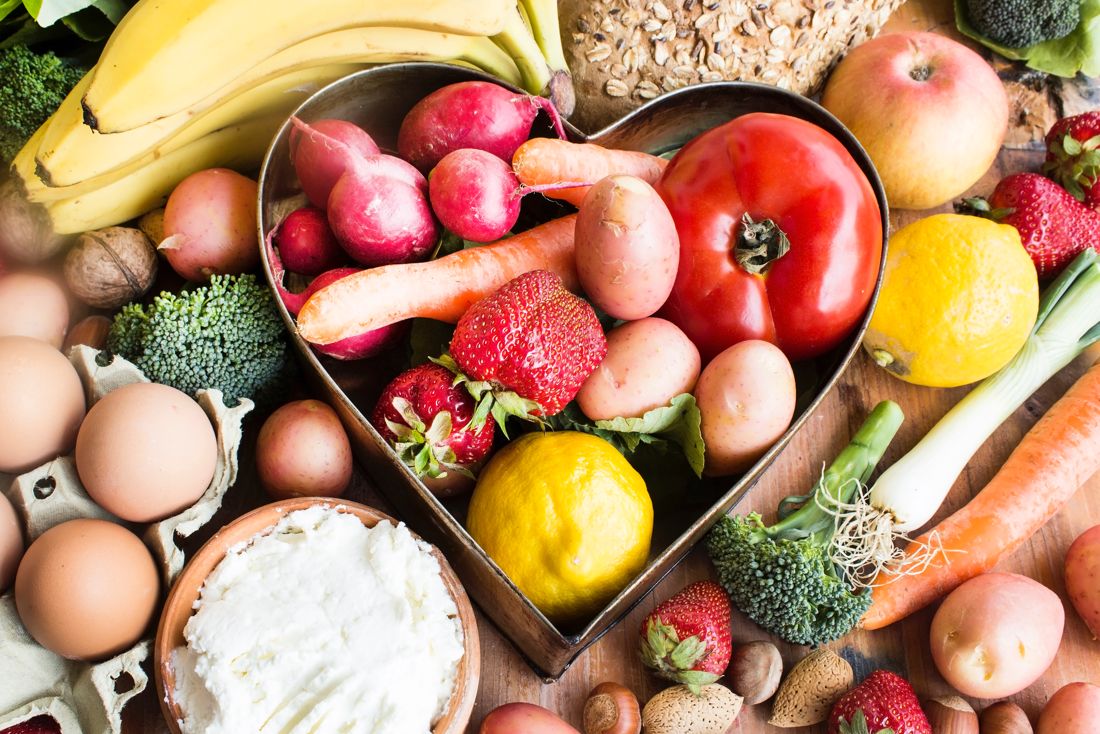
Your employees are a diverse group of individuals with their own set of health needs and goals. But the one thing they all need to make it through the (work) day is the proper nutrients. Provide your team with the resources to eat well both at home and at work, and you’ll see their energy—and productivity—soar!
It’s time to think of all the fresh fruits and vegetables available in our own backyards. You may have noticed that it’s becoming more and more common to seek out locally produced foods. Are you ready to join the club? Read on to find out why it’s such a beneficial choice!
For Canadians, eating locally is tightly linked to the seasons. So we always need to consider what time of year certain produce is in season. If you have the time (and space), you might want to consider growing your own food. Knowing where food comes from can make us appreciate it more, potentially resulting in less waste—a great motivation to eat more fruits and veggies! (Did you know that close to 50% of Canadians adults do not get enough fruits and vegetables? And when it comes to Canadian youth (grades 6-12), only one in ten are getting their required intake. It seems we could definitely use the motivation.) And don’t forget, even if your food is from your neighbour’s garden, the same basic washing principles always apply.
Eating locally is a great way to help preserve our farmland and the economic viability of local farmers. While going to the grocery store might be just another chore on your list, visiting a local market or even picking your own fruits and vegetables can become a fun family activity, a chance to walk outside and get some fresh air (and a little bit of exercise too)! Another option is to support farmers directly through community supported agriculture programs. Sign up to receive a weekly basket full of surprises (based on available fruits and vegetables) and recipes. This is an interesting way to discover and cook healthy foods, and vary the meals you prepare at home.
While purchasing organic produce has its advantages when it comes to the environment, going organic might not be suitable for your wallet. Still, you can go green by choosing foods that don’t travel as far to reach your mouth, and have a much smaller carbon footprint as a result. While a long journey may have an effect on a fruit’s vitamin and mineral content, keep in mind that the nutritional value of fresh produce depends on a number of factors (e.g., season, variety of plant and soil, etc.). So don’t assume that organic fruits and vegetables are always the healthier option.
Remember, too, that local foods are not restricted to fruits and vegetables. You can also purchase milk, eggs, meat, grain products, and legumes from local producers all year long. Generally, since locally grown products undergo fewer modifications, they tend to have less sodium, saturated fat, and refined sugar, as well as fewer calories—which is great news for your health!
For more health information, visit the health section of our blog!
Key Websites
- Fruit and Vegetable Availability Guide (Canadian Produce Marketing Association)
- Are organic foods better for my health? (Dietitians of Canada)
- Community Supported Agriculture: Get Your CSA! (USC Canada)



